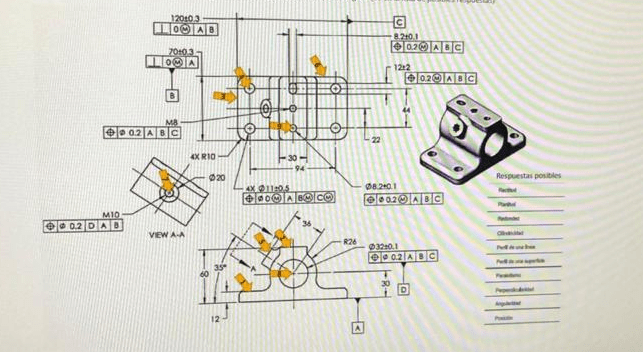Michael Boble
Aerospace
Hello to the entire forum, again I contact you to answer a question about an exercise that I am working on, I would like you to support me by verifying my answers and give me your opinion with number 5 and 6.
The question is:
"Relative to Datum Feature" A ", which Geometric characteristic is appropriate:"
Options:
Straightness, Flatness, Roundness, Cylindricity, Profile of a line, Profile of a surface, Perpendicularity, Angularity, Position and Parallelism
I currently have these answers:
Number 1: Profile of a surface
Number 2: Flatness
Number 3: Perpendicularity
Number 4: Position
Number 5: ??
Number 6: ??
Number 7: Angularity
Number 8: Parallelism
Number 9: Perpendicularity
Thank you all for your support, stay safe !!
(an apology for the image quality, it's the best I could get)
-MB

The question is:
"Relative to Datum Feature" A ", which Geometric characteristic is appropriate:"
Options:
Straightness, Flatness, Roundness, Cylindricity, Profile of a line, Profile of a surface, Perpendicularity, Angularity, Position and Parallelism
I currently have these answers:
Number 1: Profile of a surface
Number 2: Flatness
Number 3: Perpendicularity
Number 4: Position
Number 5: ??
Number 6: ??
Number 7: Angularity
Number 8: Parallelism
Number 9: Perpendicularity
Thank you all for your support, stay safe !!
(an apology for the image quality, it's the best I could get)
-MB


